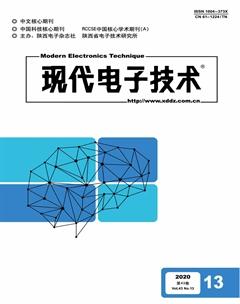一种Chirp信号的低复杂度频谱分割与聚合方法
阎张懿 仇洪冰 郑霖 张文辉



摘 要: 通过对扩频信号进行频谱分割、置乱、频谱插空和聚合恢复,不仅可以提高通信系统的频谱利用率,而且起到了物理层加密和提高抗截获能力的效果。但是,传统信号的频谱分割与聚合采用频域滤波器组技术,算法复杂度高,实用性差,且更容易受到干扰影响。针对线性调频(Chirp)扩频信号,利用其时频具有线性关系的特性,设计提出了一种基于时域成型窗算法,通过理论分析证明了与频域滤波等价的效果,较大程度降低了频谱分割聚合的复杂度,提高了聚合的鲁棒性。仿真结果表明,在Chirp?BOK通信系统中,该方法在误码率以及复杂度方面均优于传统频域滤波算法。
关键词: 抗截获; 滤波器组技术; 频谱分割; Chirp信号; 时域成型; 理论分析
中图分类号: TN911.72?34 文献标识码: A 文章编号: 1004?373X(2020)13?0001?05
A method of spectrum division and combination for Chirp signal
YAN Zhangyi1, QIU Hongbing1, ZHENG Lin1, 3, ZHANG Wenhui2
(1. Guangxi Key Laboratory of Wireless Wideband Communication and Signal Processing, Guilin University of Electronic Technology, Guilin 541004, China;
2. Guangxi Cooperative Innovation Center of Cloud Computing and Big Data, Guilin University of Electronic Technology, Guilin 541004, China;
3. Key Laboratory of Communication Network Information Transmission and Distribution Technology, Shijiazhuang 050081, China)
Abstract: The spectrum division, scrambling, insertion and recombination recovery of the spread spectrum signal can not only improve the spectrum utilization rate of communication systems, but also improve the physical layer encryption and the anti?interception ability. However, the traditional signal spectrum division and recombination method adopts filter bank technology, which has high complexity and poor practicability, and is more susceptible to interference. In this paper, a time?domain shaping window algorithm is proposed to deal with the Chirp spread spectrum signal by utilizing the characteristic that its time?frequency has linear relationship. The theoretical analysis proves that its effect is equivalent to frequency domain filtering, which greatly reduces the complexity of spectrum division and recombination and improves the robustness of recombination. The simulation results show that, in Chirp?BOK communication system, this method is superior to traditional frequency domain filtering algorithm in terms of bit error rate and complexity.
Keywords: anti?interception; filter bank technology; spectrum division; Chirp signal; time domain forming; theoretical analysis

